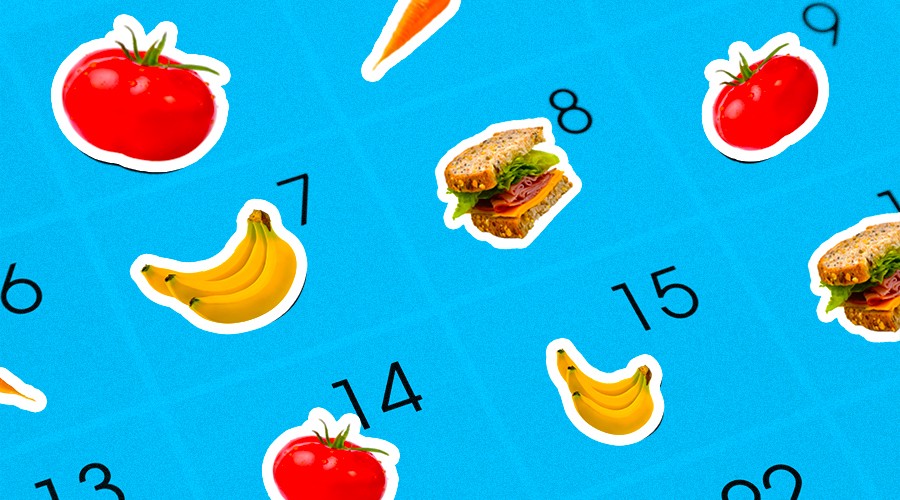You go to the grocery store with ambition. This week, you tell yourself, you will stick to the plan: You will eat healthily, or cheaply, or whatever your goal is right now. You will not waste a leaf, a drop, a scrap of food. This week, you proclaim, you are the master of your cart.
One week later, just like always, half of it is left uneaten in the fridge — wilting, shriveling or graying at you with a look that clearly says: You done fucked up, son.
But is there a way to avoid this expensive pitfall? We talked to a professional organizer and a clinical nutritionist and found out, yes — several ways, in fact.
Method #1: Plan Out an Entire Week’s Worth of Meals
You’ve probably tried this — most of us have. But even though there are shopping lists for exactly a week’s worth of meals available all over the internet, it doesn’t solve the hardest part, which is sticking to it. Plans change; you get tired; and/or you’re just not in the mood for what’s on the menu tonight. So although this method makes sense in theory, it’s not always practical for everyone.
“I don’t think it’s realistic to plan out every meal in advance,” says Gwynnae Bird, a professional organizer and efficiency expert. “Most people don’t decide what they want to eat until it’s close to mealtime.”
If you do go for this option, the keys to success include — obviously — detailed planning, including which meals you may be doing other things for: Dates, happy hour drinks and appetizers, etc.; cooking in bulk and reheating food throughout the week; and a little bit of wiggle room to cheat for a meal or two without getting discouraged.
Method #2: Make Your Shopping List Flexible
With a little bit of planning and forethought, you can buy enough basic staples to keep you going without needing more than a few supplementary ingredients each week. But what to choose?
“The bottom line is enjoyment,” says Wahida Karmally, a director of the Bionutrition Research Core at Columbia University. “Why do people enjoy the foods they do? The most important thing is the taste, then comes cost and convenience.” That is, you’re more likely to actually eat the food you have if it’s something you like, so don’t try to radically change your diet at the same time as embarking on a set meal plan.
In terms of your pantry, keep stocked up on the building blocks of meals: Rice, pasta, canned beans, tortillas, condiments, oils, dairy and pastas. To make sure you’re on top of what you’re running low on, keep a shopping list in the kitchen and add to it as necessary.
When you’ve got this sorted out, you can embark on a less complicated — and less finely planned — weekly shop. For this, Bird recommends getting just two to three fruits and two to three vegetables that you know you like. And Karmally has a useful trick for making sure you actually use them: Keep them visible.
For instance, take your vegetables out of their plastic bags and don’t hide them in the fridge drawers — you want to see them every time you open the door. According to Karmally, broccoli, carrots, cabbage and Brussels sprouts tend to last the longest in the refrigerator; she also recommends buying bags of frozen vegetables and fruits.
For the rest of your cart, Karmally recommends lean meats if you’re on a budget, since they tend to be cheaper, and the surprisingly versatile tub of yogurt, which can be eaten on its own, made into a dressing, used as a dip, used as a meat marinade, or even employed as a substitute for cheese or sour cream.
Method #3: Resign Yourself to Eating the Same Thing for a Week
Some people don’t want the hassle of planning a week’s worth of diverse meals. If you’re really into, say, chicken or sweet potatoes, and can stand eating a lot of one thing day after day, just go ahead and buy it in bulk. You might feel strange standing in line at Costco with a cafeteria-sized sack of broccoli, but whatever works, right?
For a bit of diversity throughout the week, Karmally advises embellishing the main ingredient with mushrooms, onions, tomatoes, carrots or cauliflower, and starches like rice or pasta, all of which will easily pair with your main item for different variations each time. “Even if you get a box of frozen pizzas, you could add different vegetables to it each night,” Karmally says.
Because microwave pizza with frozen carrots is technically a meal, right?

